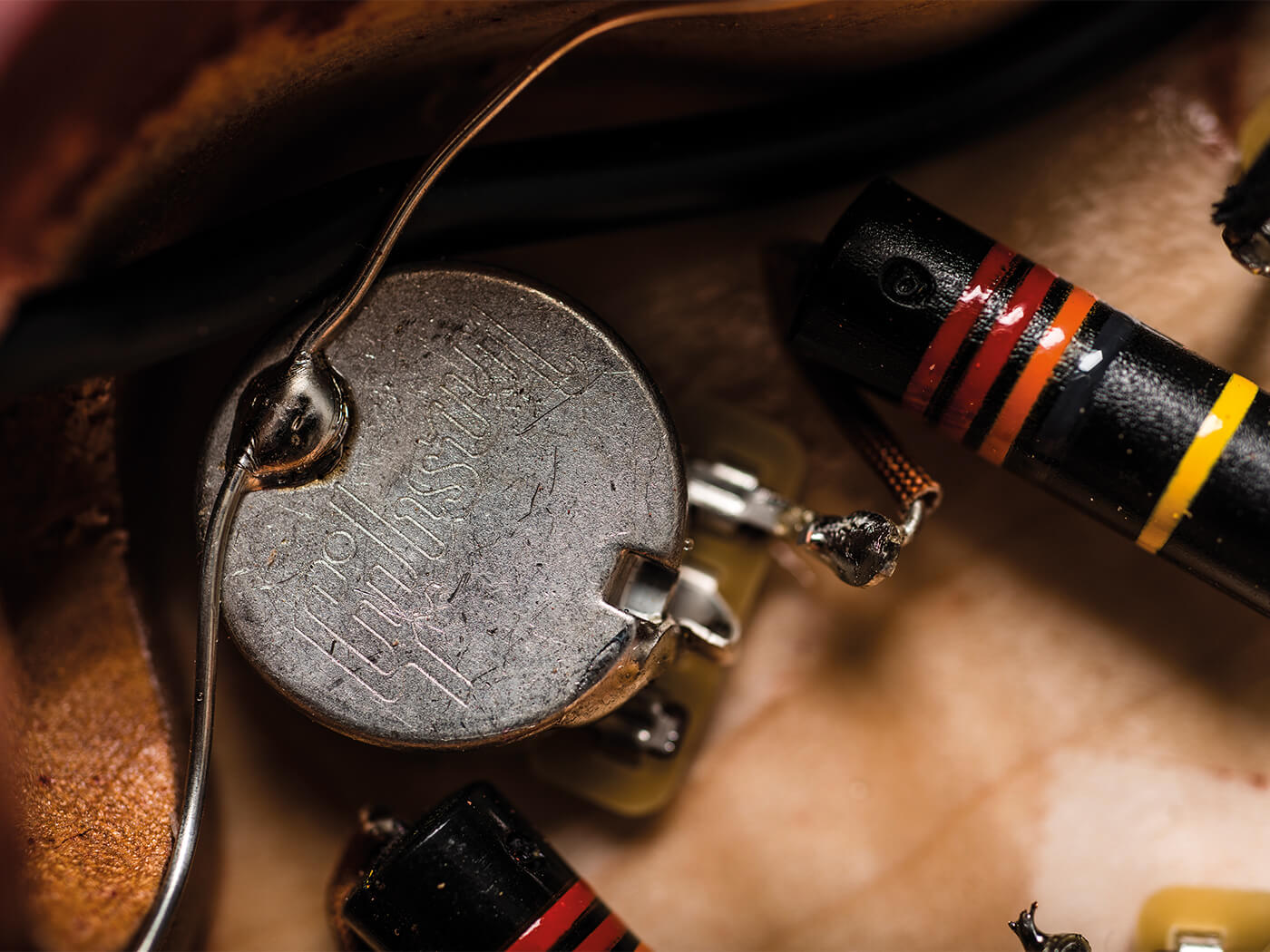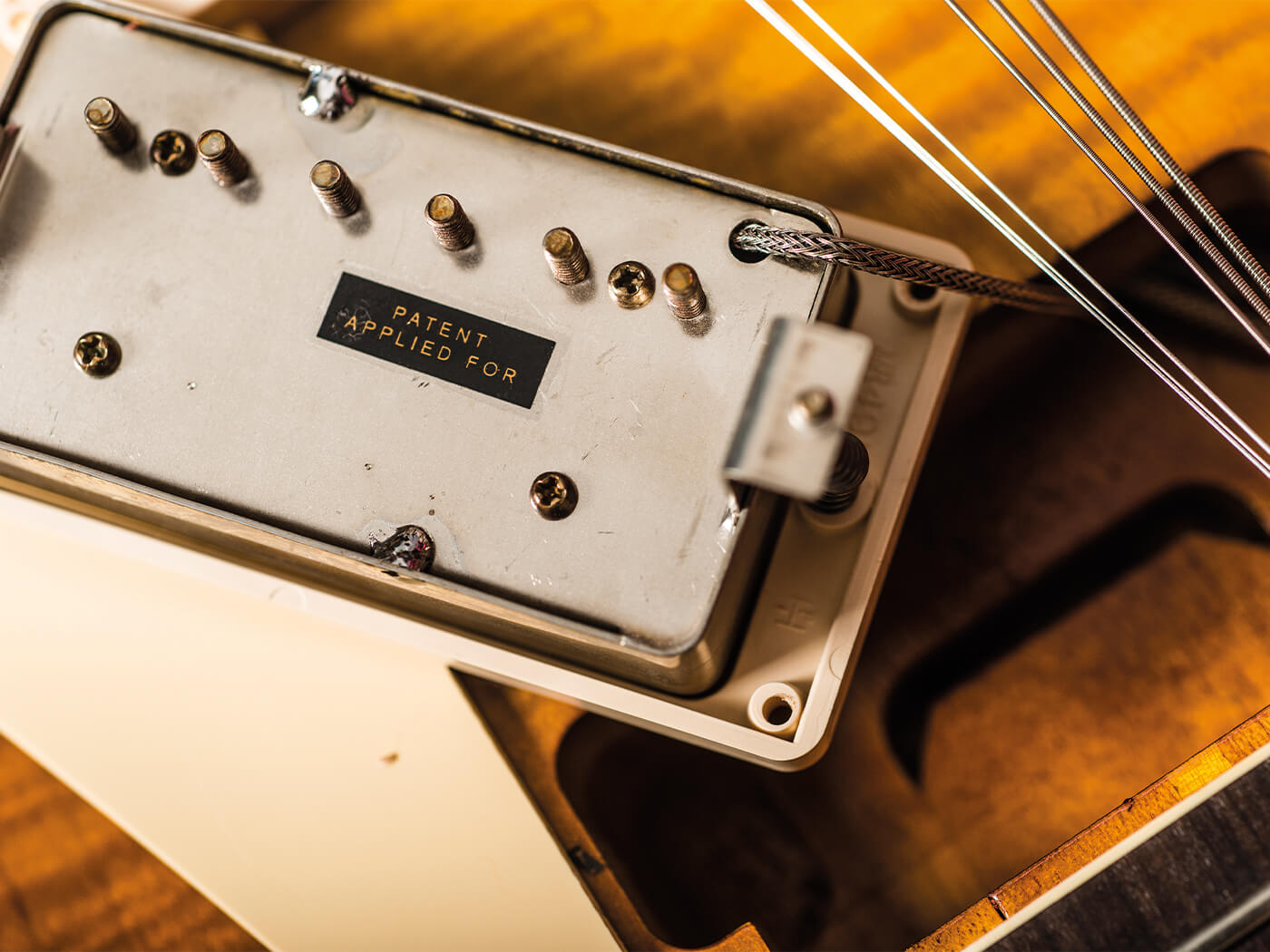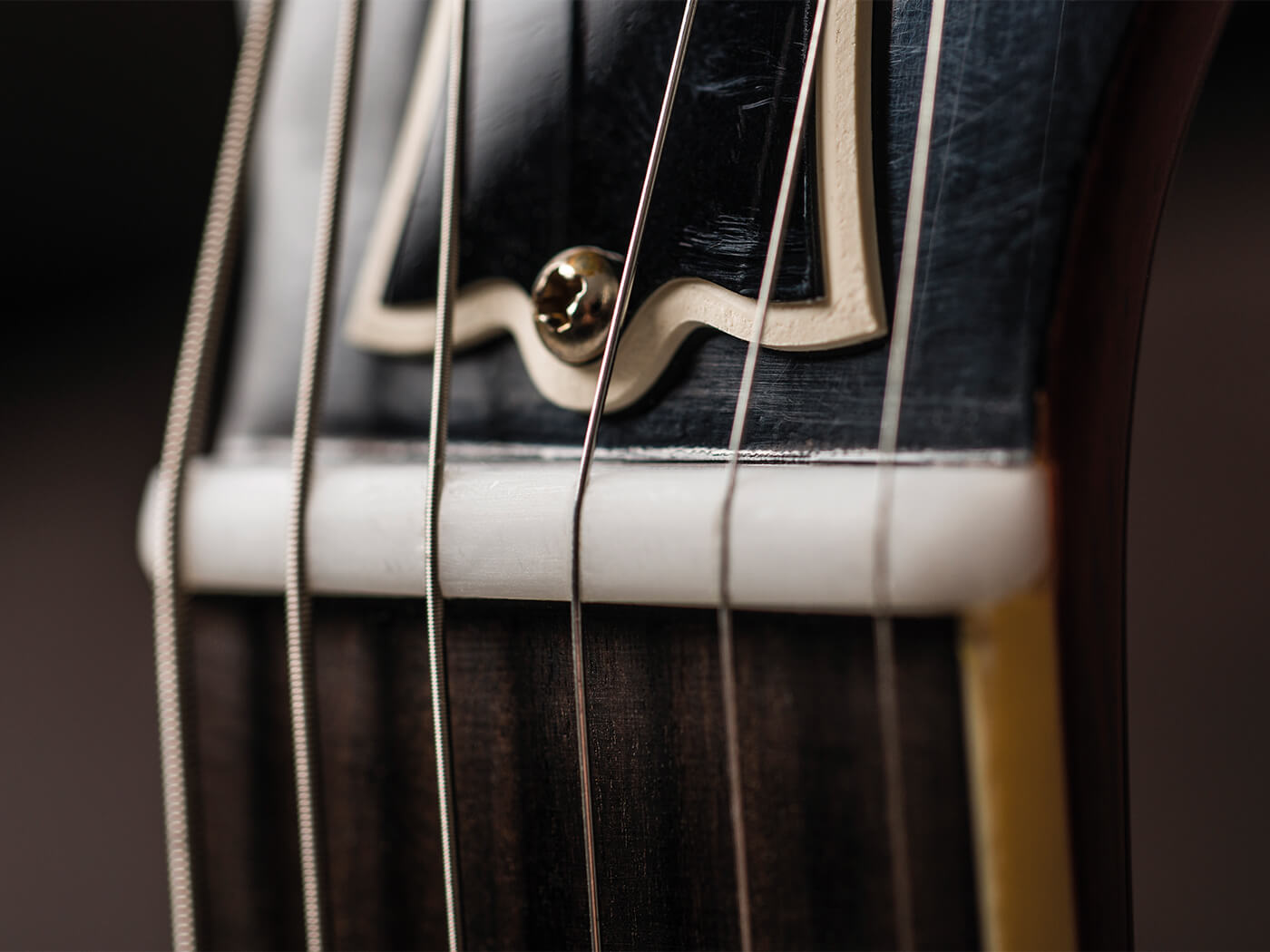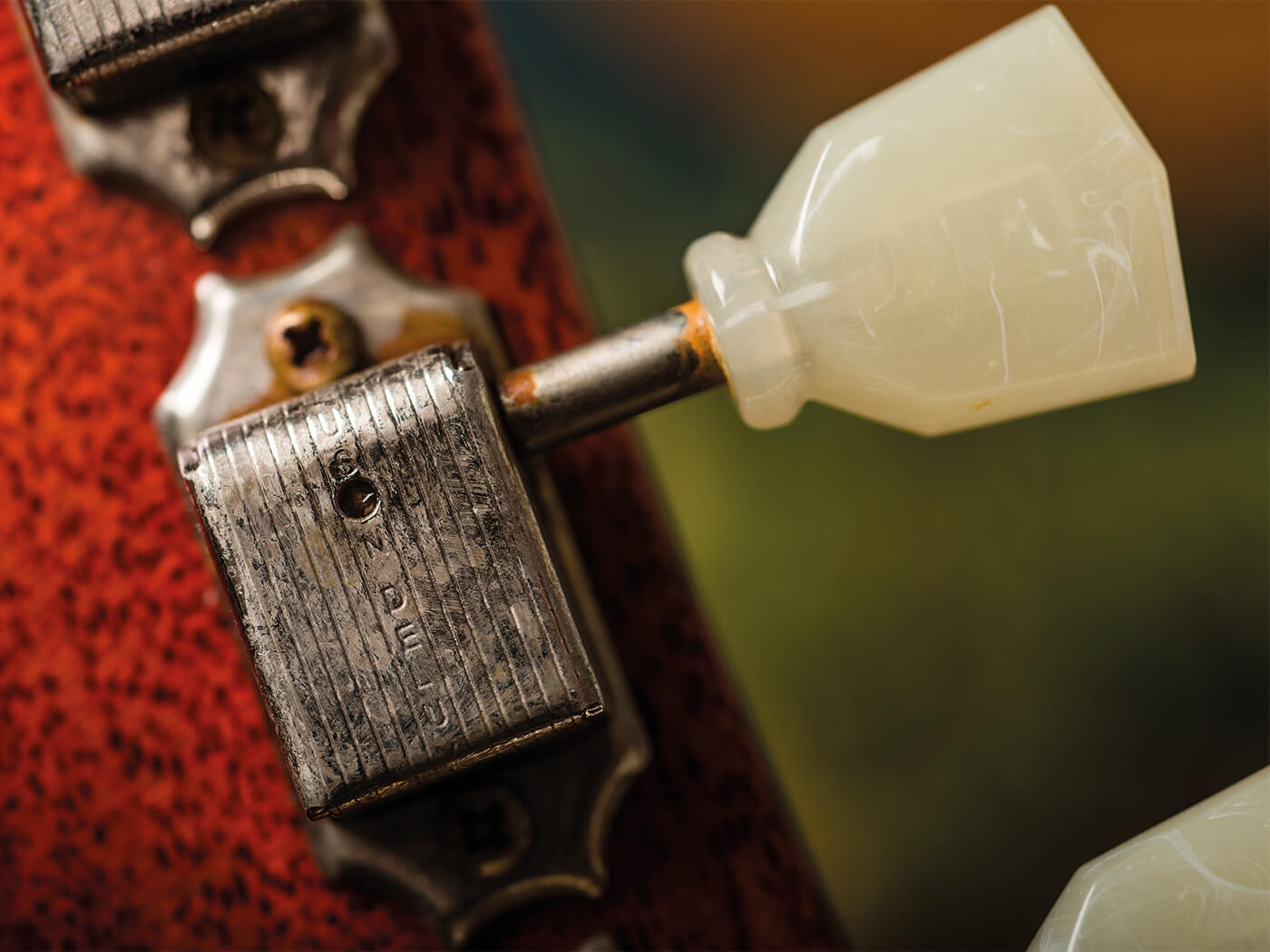Related Tags
Review: Gibson Custom 60th Anniversary 1959 Les Paul Standard
Gibson Custom’s 60th Anniversary 1959 Les Paul Standard is the rejuvenated company’s latest attempt to replicate the most sought-after vintage guitar of all time. Could it be Gibson’s best Burst reissue to date?
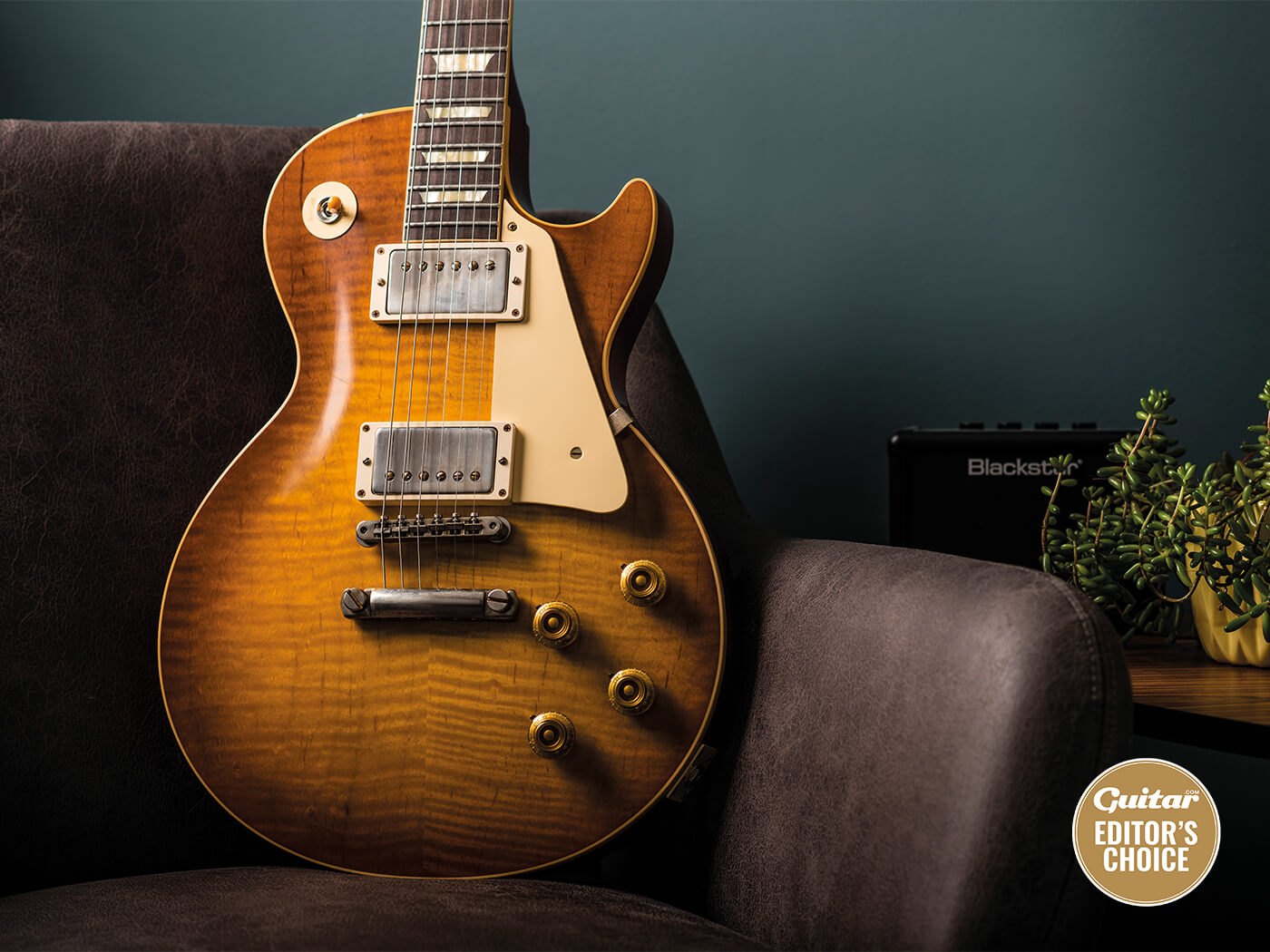
All images: Eleanor Jane
Review Overview
Our rating
9
Our verdict
Once the beating heart of youth rebellion, rock ’n’ roll is now of pensionable age and the tools that powered its evolution are knocking on a bit, too. The Les Paul is a case in point, but Gibson has chosen the 60th anniversary of its most lusted-after incarnation to release what might just be the company’s best and most vintage-accurate Les Paul Standard since Eisenhower sat in the Oval Office.
Billed not just as a tribute, but a ‘clone’, this 2019 model incorporates some of the R&D that went into Gibson Custom’s Collector’s Choice and True Historic lines, saluting the instrument used to such blistering effect by the likes of Keith Richards, Eric Clapton, Michael Bloomfield and Jimmy Page. From period-correct hangtags to 3D-scanned top and neck carves and chemically recreated old-school plastics, the idea is to give Les Paul aficionados a guitar that ticks all the right boxes without costing as much as a house. Time to dig a little deeper…
Why ’59?
For most vintage-guitar collectors, sunburst Gibson Les Pauls from 1958-60 are the Holy Grails. Over the years, Gibson’s various reissue models have encouraged guitar players to think of particular features as specific to certain model years, but the reality is that 1 January 1958 didn’t see Gibson throw away its gold paint and immediately start applying cherry sunbursts. Of the 434 Les Paul Standards that left Parsons St, Kalamazoo in 1958, approximately half were Goldtops.
Production officially switched over to sunburst finishes and two-piece maple tops during July 1958, but the earliest factory ‘Bursts’, as they’ve become known, were serial numbers 8 3087 and 8 3096. According to Gibson’s ledgers, these instruments shipped on 28 May 1958 and were logged as having a “special finish”. We encountered 8 3087 – generally regarded as the ‘First Burst’ – at Carter Vintage Guitars in Nashville in 2016 and it’s a spellbinding instrument. Although its three-piece maple top isn’t quite as aesthetically pleasing as the centre-joined, two-piece tops that followed, in every other respect, it appears that Gibson already had the formula nailed.

That said, some small but significant changes were phased in during 1959. For many, this crystallised the Les Paul Standards made during the period through to early 1960 as the high-water mark of electric solidbody manufacture. And we’re not referring to the move to squarer corners on the jack socket plates. The key updates from a playability standpoint were the arrival of wider fretwire and slightly slimmer neck dimensions, while the most desirable period also coincided with the serial-number range in which the red pigment in the guitars’ sunburst finishes was most susceptible to fading when exposed to ultraviolet light.
Although the more colour-fast ‘tomato soup’ Bursts with thinner necks from later in 1960 are regarded as less appealing by some hardcore Les Paul fanatics, we’re still talking about some of the best electric guitars ever made, with a monetary value way beyond the reach of 95 per cent of the population. Yet for the most part, it’s the ’59 – aided and abetted by the adoration of a laundry list of rock luminaries – that holds the most allure.
Rewind the tape
Celebrating six decades of the most famous guitar in its back catalogue, the newly reinvigorated Gibson unveiled the 60th Anniversary 1959 Les Paul Standard at Winter NAMM 2019. Despite the doom and gloom surrounding the company’s finances, the Custom division has been doing some stellar work in recent years and our review guitar benefits directly from the research and development that went into True Historic and Collector’s Choice. With True Historic now discontinued and the Collector’s Choice concept having run its course, there’s still scope to use the data, hardware and manufacturing techniques to inform new reissue models.
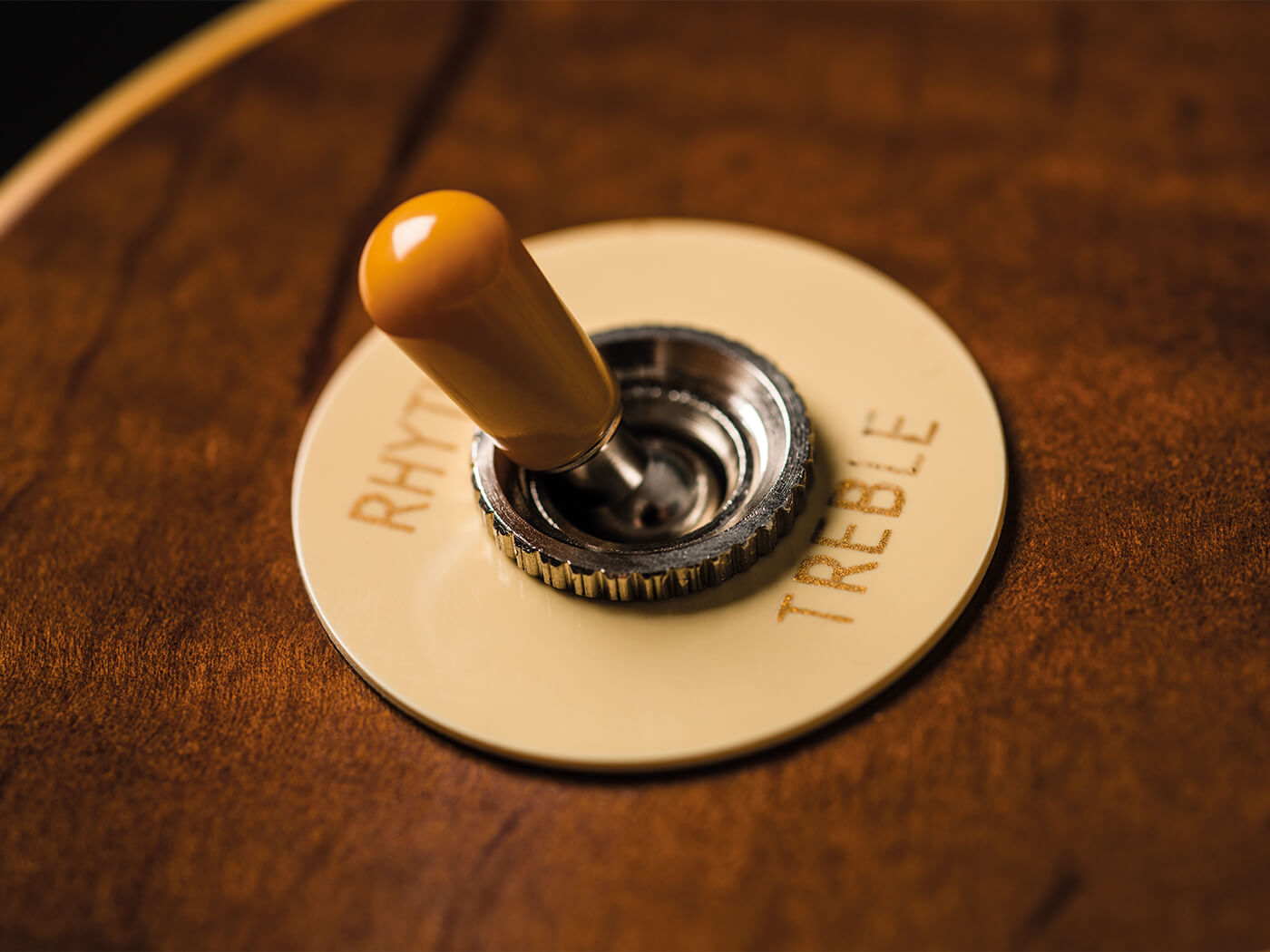
This manifests itself here in a top and neck carve taken from the Collector’s Choice #37 ‘Carmelita’ model, (created by 3D scanning the original Les Paul, serial number 9 1953) and the presence of plastics recreated for the True Historic programme unveiled in 2015, such as the amber Catalin switch tip and laminated cellulose acetate butyrate pickguard. For some, these are steps down the rabbit hole too far, but hardcore Les Paul aficionados inhabit a world in which imperfections such as chatter marks are desirable details on a reproduction scratchplate or truss-rod cover. Don’t believe us? Check out the prices people are willing to pay for original vintage parts or high-quality aged repros on Reverb.
It’s Gibson Custom category product specialist Mat Koehler’s job to sweat the small stuff and he considers the use of hide glue for the top-to-back, fingerboard-to-neck and neck-to-body joins to be “a big part of the recipe” of the new 60th Anniversary guitar. “It was developed in 2014 for the True Historic models,” says Mat. “It really does make the guitars more acoustically resonant and measurably louder, on top of being historically accurate.
“A louder and more resonant solidbody guitar produces better tone,” he insists. “People talk about the clarity of original PAF humbuckers and forget that a lot of that is the sound of the instruments themselves. The pickups capture the essence of the instrument as much as the design affects the tone shape.”
This ties in with the philosophy that an electric guitar should be thought of holistically, as a system in which the component parts working in harmony is the key to a great-sounding instrument. Rather than a straightforward process of replication, Mat reveals that finding the missing pieces of the puzzle involved “lots of time spent analysing 1950s Gibsons under the hood and lots of time spent A/B-ing various potentiometer brands and tapers and values against the original 1950s Centralabs. Hearing the differences in alnico II, III, IV and V magnets in our True Historic humbuckers and establishing consensus on a winner. Choosing to celebrate the sound of unpotted humbuckers and that squeak and squeal we’re used to hearing out of vintage Les Pauls.
“It’s weird science,” he admits, “but we learned that attempting to replicate the 1950s processes and materials wouldn’t always provide the result we were looking for. The composition and quality of those materials translate differently to what’s available today. So we really had to use our ears, and we brought in artists and collectors and experts to make sure we weren’t crazy [laughs].”

One such artist was Jason Isbell, himself a Burst owner after recently acquiring ‘Red Eye’, the 1959 Les Paul formerly owned by Lynyrd Skynyrd guitarist Ed King. “We just had Jason here with his ’59 burst,” reveals Mat. “He A/B’d it against a 60th Anniversary ’59. He was absolutely flabbergasted. It was fun to see. The originals have this great transparency and ‘bloom’ and ‘woof’ and ‘squeak’ and all the other ridiculous words used to describe PAF tone. As soon as we removed the wax potting, I really feel we opened the door for all those elements of classic PAF tone to appear – especially when paired with the new wiring harness.
“Finally, some of the differences for 2019 were just aesthetic things fuelled by my obsessive-compulsive disorder,” Mat admits. “We tweaked the headstock logos, the Les Paul silkscreen, inlay material, and colours of the bursts, dyes, metallics et cetera. Some of the parts have seen improved accuracy as well, and there is more minor work to be done to that extent, but we really tried to throw everything at these guitars that we possibly could!”
Hands on
The 60th Anniversary model’s five-latch reissue Lifton case has reproduction hang-tags in its internal pocket along with a more modern Custom Shop COA (and better foam protection for the headstock). It might not be an original ’59, but it’s still a thrill to see an instrument such as this framed by the brown case’s pink lining. Before we even pull the guitar out, simply walking around it reveals how much the mineral-streaked two-piece flametop ripples under lights. Just like many of the old ones, the maple cap looks almost plain from some angles and heavily figured from others.
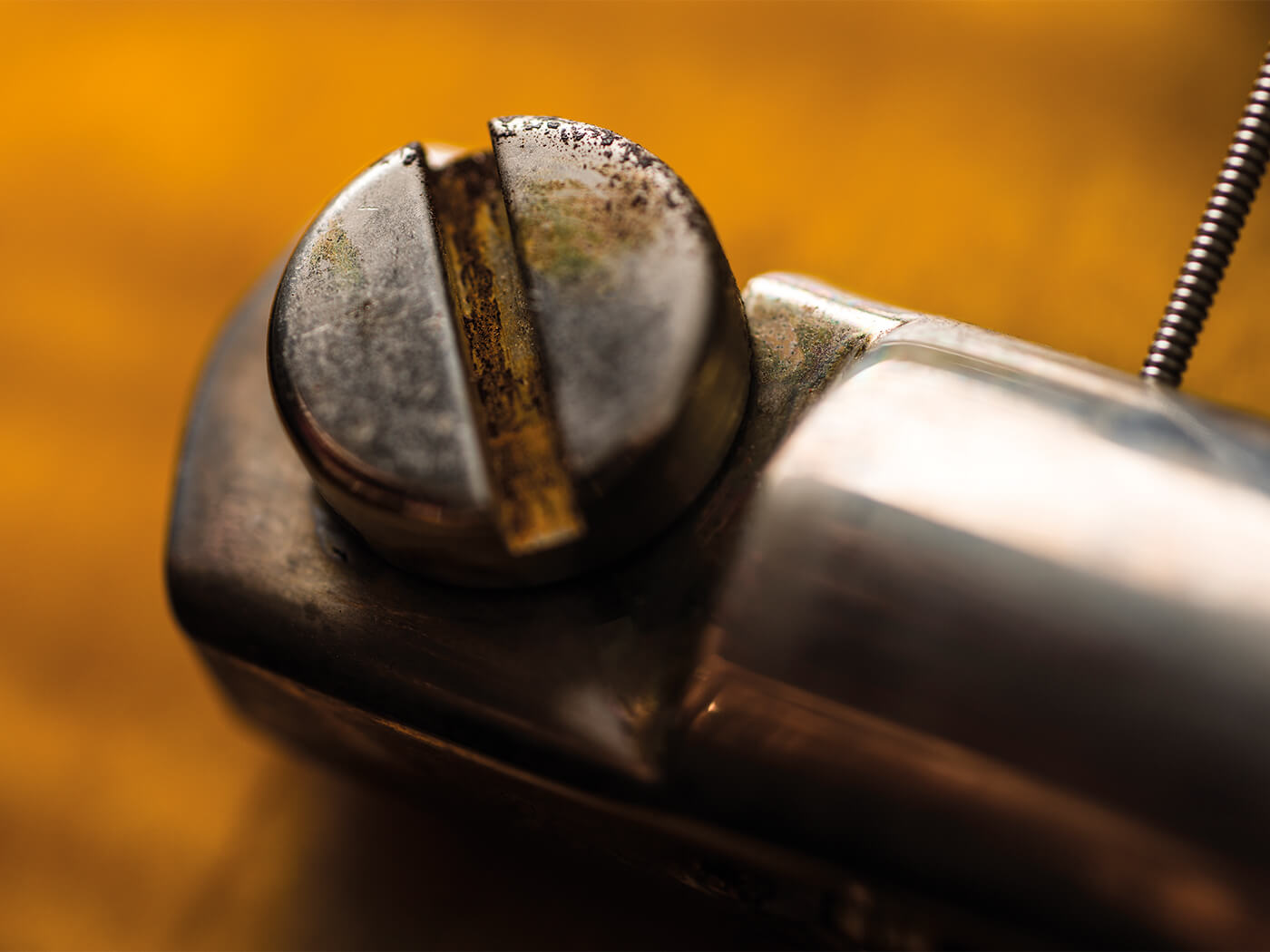
The top looks the part and so does the headstock, with tinted clear coats over the mother of pearl Gibson logo lending it an authentic greenish-gold hue, while the position of the finer and lighter silkscreen signature and the stepped truss-rod cover with its slightly rough-textured white edging will go some way towards appeasing internet-forum extremists. Back down at the body end, in case you are wondering why the screw that holds the pickguard onto the bracket is a slot-head rather than a Phillips, the answer is that there was some randomness in this regard back in 1959, but plenty of Bursts left the factory with slot-heads. Panic over.
While the guitar’s nitrocellulose finish has only a very subtle VOS treatment, its metal parts have a factory-aged patina and even a little rust here and there – the overall aesthetic vibe is one of a remarkably well preserved vintage instrument. Royal Teaburst is one of 10 finishes that are available, all emulating various stages of cherry-sunburst fade, aside from Kindred Burst, which is a tobacco sunburst. Around the back and sides, the aniline dye is a little darker than the shade used on other recent reissues and as a result, it’s harder to see the sliver of maple in the cutaway.
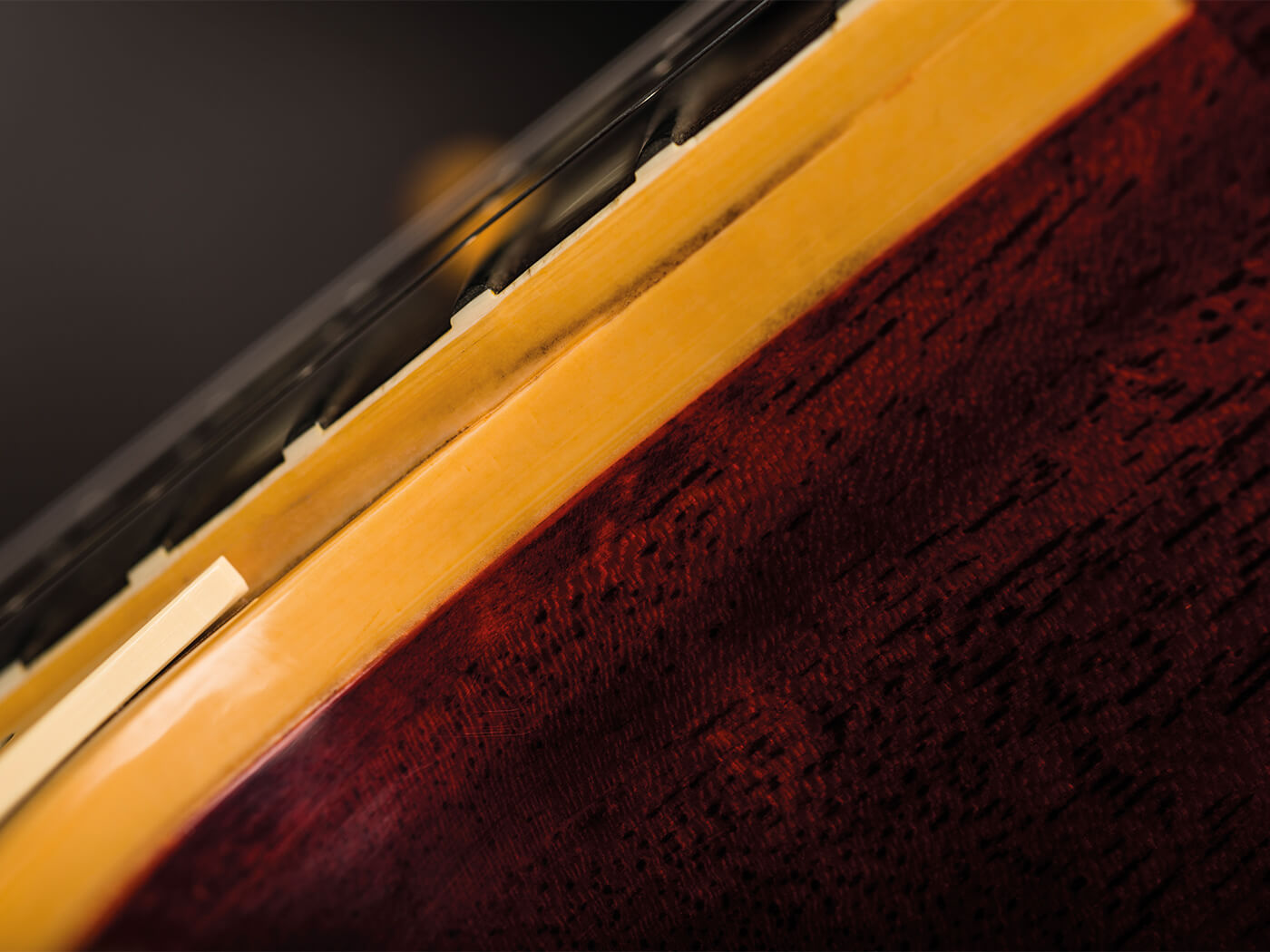
This guitar’s major departure from vintage specifications is, of course, the absence of a Brazilian rosewood fretboard. Gibson has only been able to source very limited quantities of high-quality Brazilian rosewood in recent years and none of it has shipped overseas since 2003. It isn’t even a custom option for US customers and is only made available in limited runs.
However, there are two options for fretboard material when it comes to 2019’s R9 – Indian and Bolivian rosewood. Thanks to CITES, many of us have been forced to become armchair experts on Dalbergia latifolia, but our review guitar’s Bolivian ’board – with its smooth finish, dark-brown hue and far less noticeable pores than Indian or Brazilian rosewood – requires further investigation.
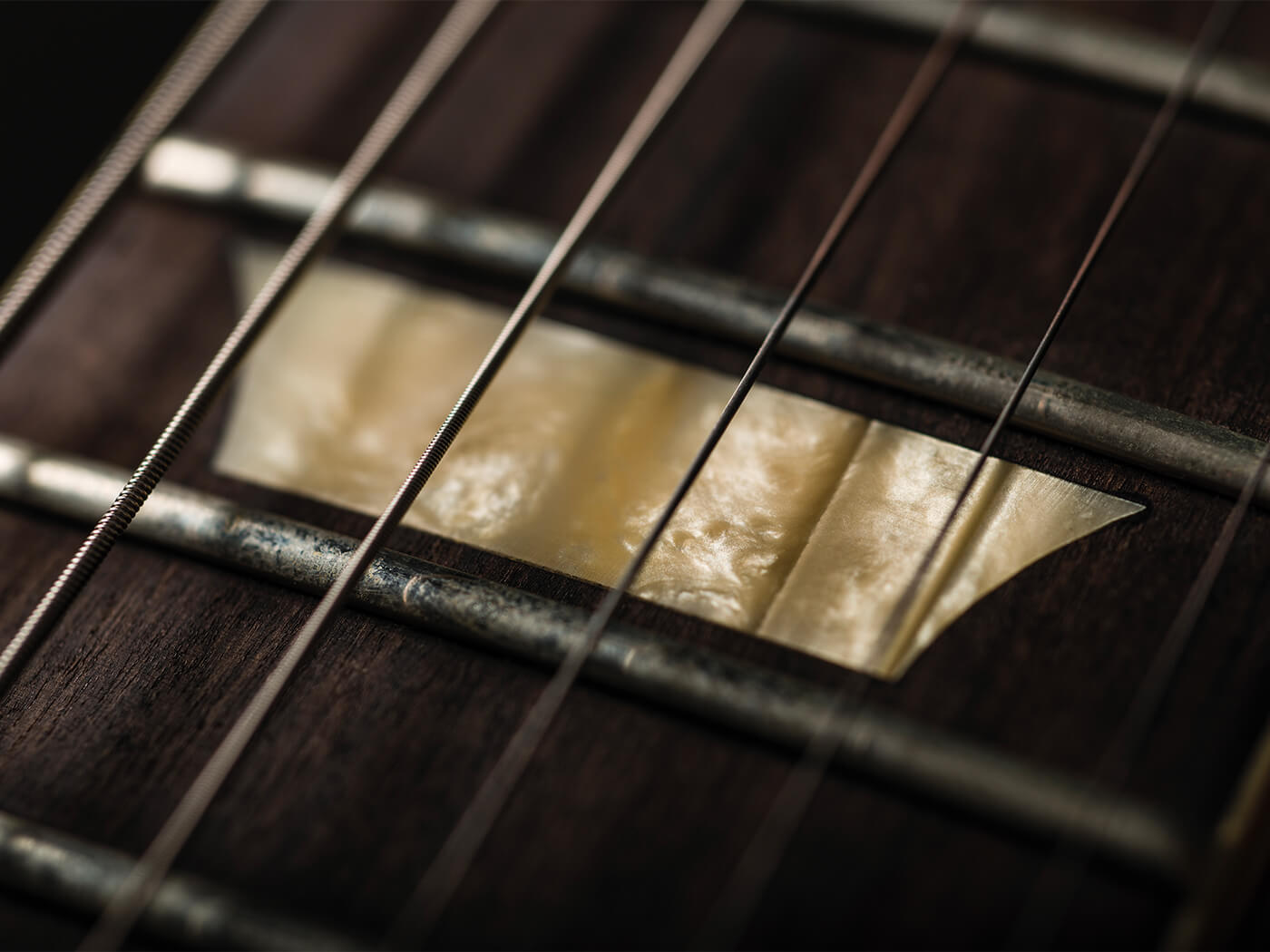
“Bolivian rosewood is essentially pau ferro from Bolivia that has been sorted and processed in Brazil and selected for its visual characteristics,” reveals Mat. “It’s dark and dense, unlike some pau ferro you see out there. The reason we offer it as an option is because it’s export-friendly in the current CITES climate and it’s a great fingerboard wood to use. It’s actually a little closer density-wise to Brazilian rosewood than Indian rosewood.”
So which does Mat prefer? “Honestly, I believe you can’t go wrong. Indian and Bolivian are both great choices. No one has detected any tonal differences, as far as I know. I would expect maybe a little less compression and more clarity out of the Bolivian because of the density. But we’re talking about splitting hairs here.”
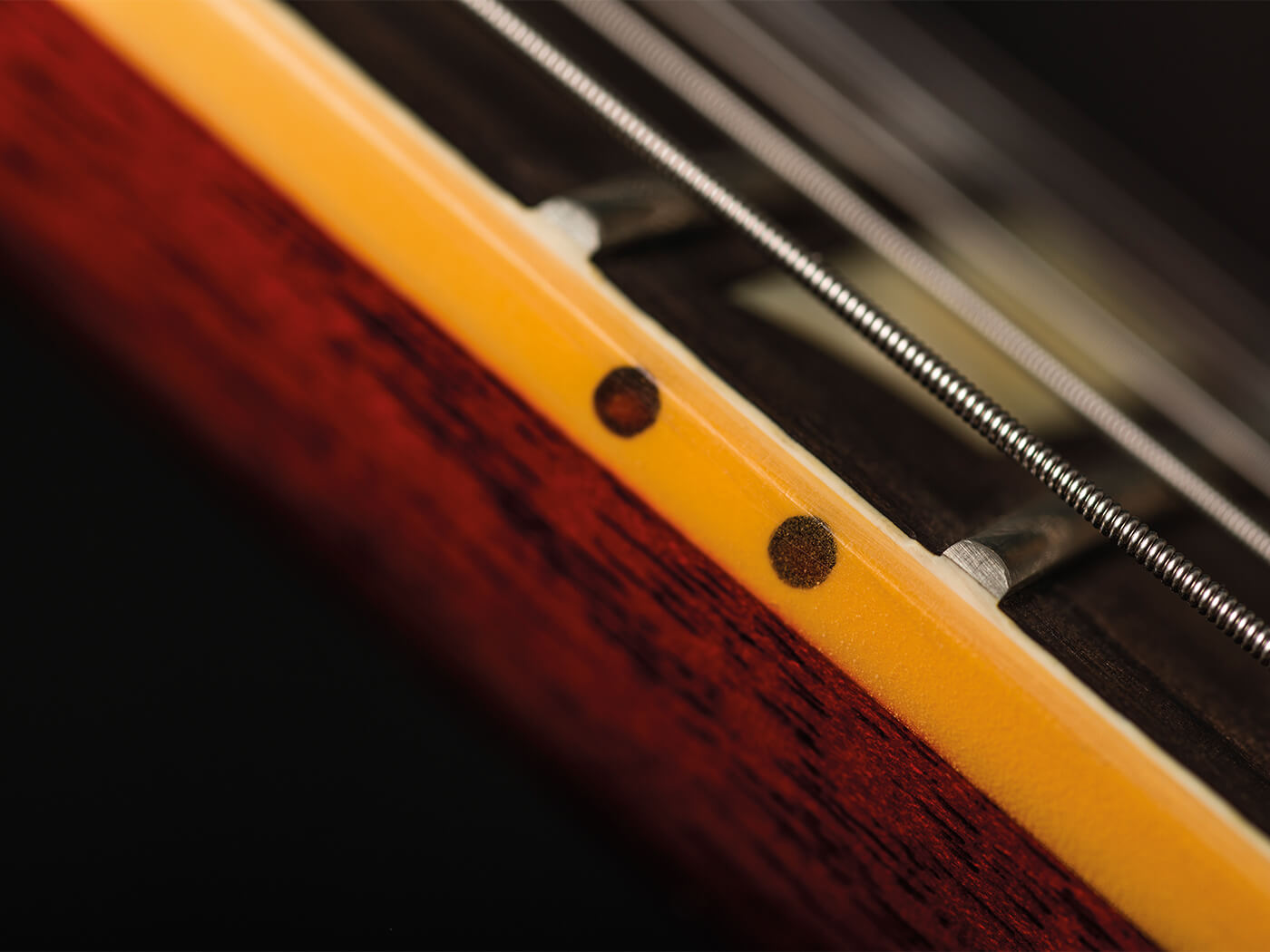
At the fretboard edges, the binding is thin and the fret nibs are suitably understated, while the side dots are tortoiseshell, as they were in the 1950s. Even with a 3D scanner recording hundreds of points all over the neck of a vintage guitar and that data being used to program a CNC machine, the amount of hand-sanding that takes place after the automated carve means that there will always be slight variances. The ‘Carmelita’ neck profile here feels just about perfect, with appealingly soft shoulders and a 22.3mm first-fret depth filling out to 25.1mm at the octave.
In use
What are we looking for from a great Les Paul? Although there’s a hell of a range when it comes to musical reference points, our dozen or so meaningful encounters with real Bursts have revealed more similarities than differences. One thing that’s common is treble, and lots of it, with extended upper harmonics and enough high-end presence to play faux-pedal-steel country licks.
Think about the stinging attack of Bloomfield and Beano and how those huge, biting lead tones are reminiscent of a Telecaster on steroids – there’s something horn-like in the adenoidal, almost vocal quality of single notes. It’s easy to hear how the PAF fits into the Gibson pickup family tree as a logical step forward from the P-90, with which it has so much shared sonic DNA.
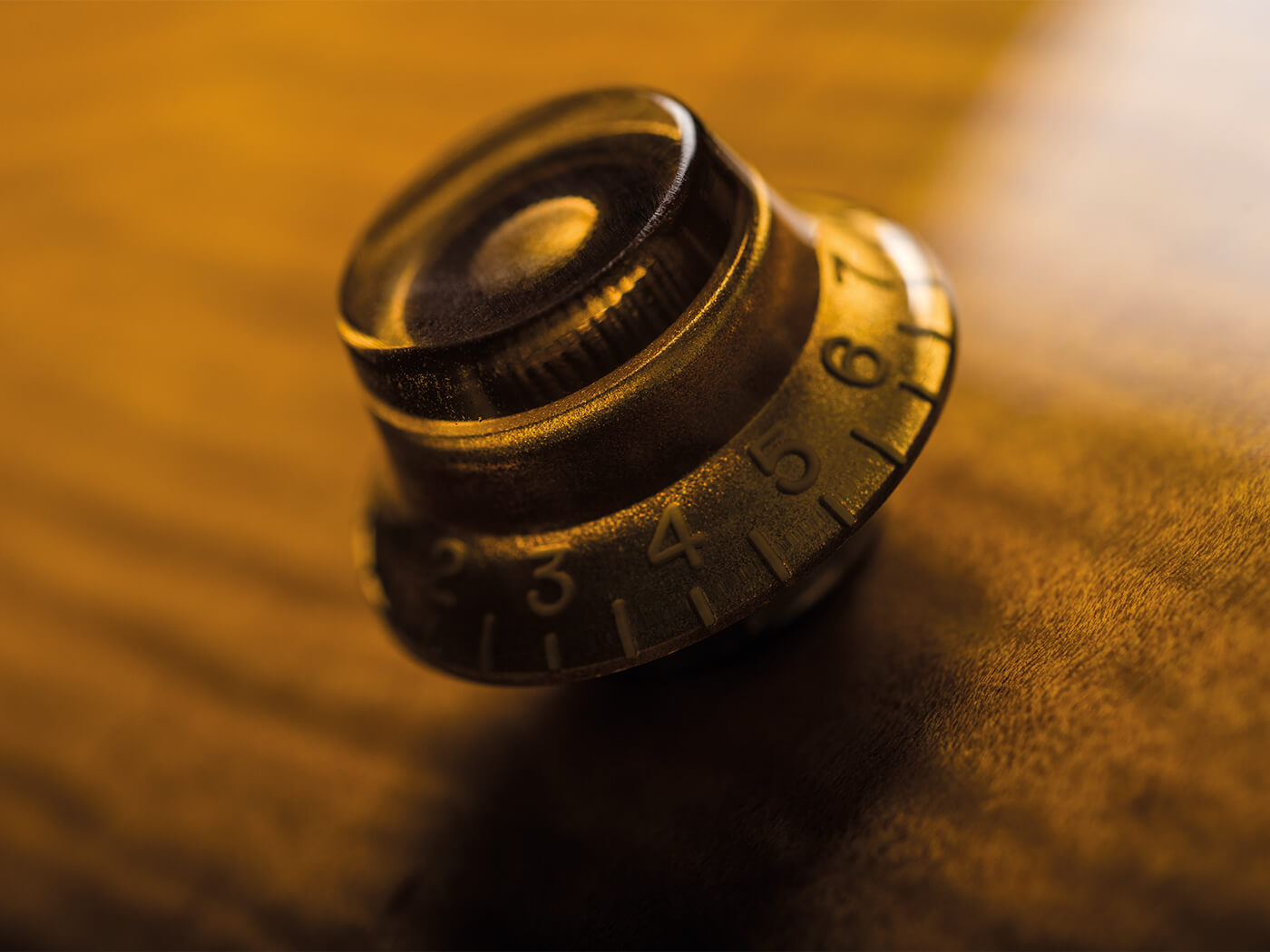
Without being shackled by heavy potting, the alnico III Custombuckers in our review guitar have plenty of air in the high end and there’s an abundance of light and shade on tap thanks to volume and tone controls that have no shortage of usable, musical range. Interestingly, the concave tops on the butyrate knobs mean that it’s a little easier to get some purchase on those top hats in sweaty stage conditions than it is when using less accurate repros.
The shifting harmonics you can hear when you hold a chord and listen closely to this guitar’s acoustic sustain are present in abundance when plugged in. The amplified tones range from cutting to dark and complex, yet the neck pickup is never woolly or cloying; there’s always plenty of snap available if you dig in with fingers or a pick, while the bridge is the place to go for more of a nasal quack. It’s powerful, too, with plenty of punch for rock riffs and powerchords.
When we rev up a Collector’s Choice Les Paul loaded with original PAFs for comparison, it’s clear that Gibson has indeed been listening hard. The PAF-equipped reference LP has more separation when playing complex chords and a slightly sweeter treble extension, but the strong family resemblance between the two sets of tones on offer is undeniable. Not bad when you consider that the PAFs alone are worth about as much as our review guitar.
Through a tweed Fender or Plexi-style Marshall, the 60th Anniversary model does everything a good Les Paul should, and even when pushing the amp hard with a Tube Screamer and a klone, we don’t experience unwanted microphonic feedback – especially not at the kind of stage volumes at which most of us are gigging these days.
There will always be those who want to make further tweaks to a reissue guitar in the spirit of recreating every detail of a vintage instrument – even its flaws – but we’d strongly recommend getting to know what the Custombuckers can do in their latest unpotted incarnation before you consider swapping them out.
And even if you do want to use this 60th Anniversary model as a platform for modifications, it’s more affordable and vintage-correct than many recent True Historic and Collector’s Choice models. Regardless, in its stock form, this is a dream guitar for most players and Gibson Custom has done a fine job of recreating a mid-century classic for the modern world.
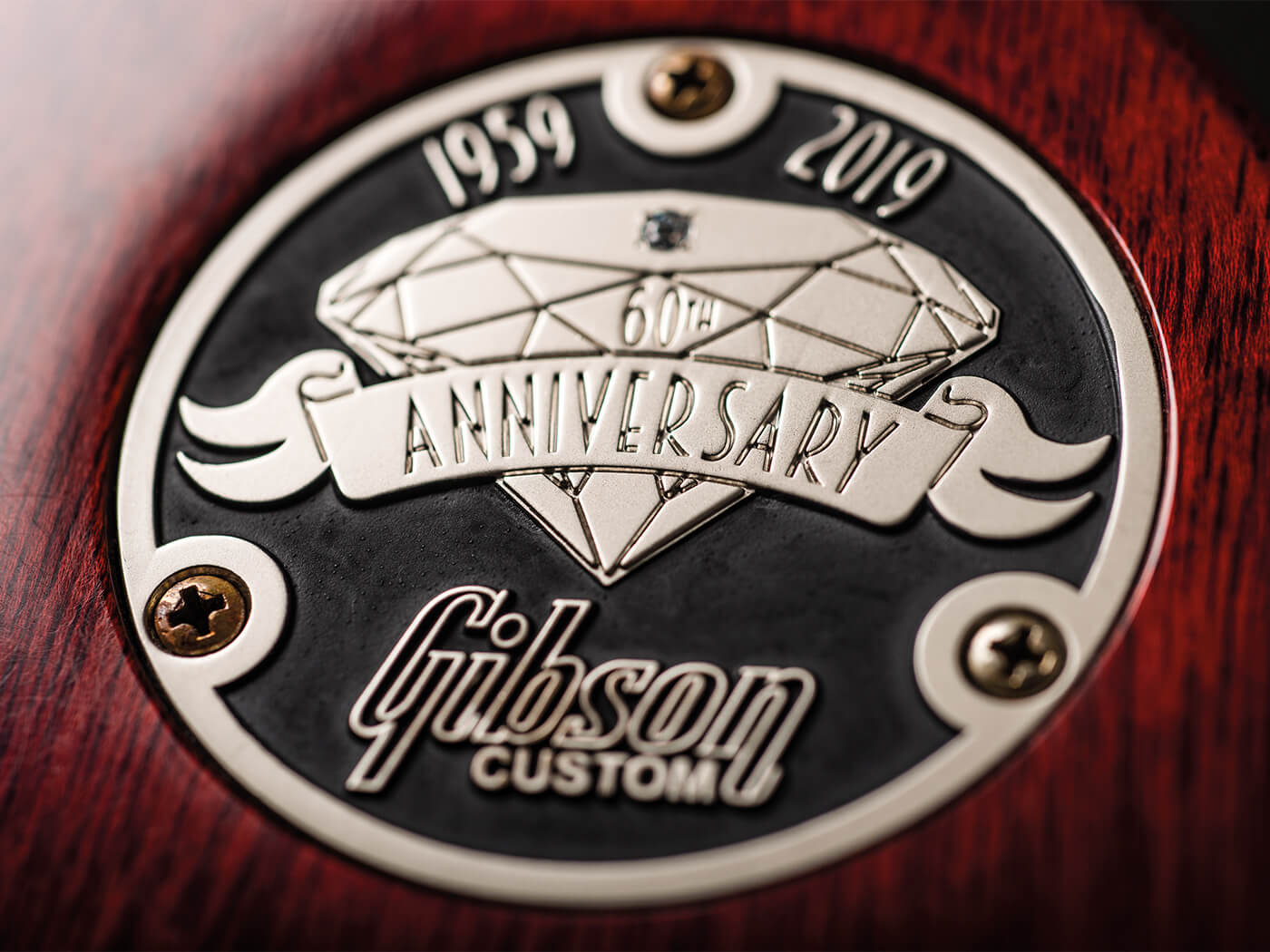
Key Features
- PRICE £5,199 (inc. hard case)
- DESCRIPTION Solidbody set-neck electric guitar. Made in USA
- BUILD Two-piece figured maple top with single-ply Royalite binding, solid mahogany back, solid mahogany neck with ‘Authentic ’59 Medium C-Shape’ profile, bound Bolivian rosewood/pau ferro fingerboard with 12-inch radius, 22 medium-jumbo frets, nylon nut, aged cellulose nitrate trapezoid inlays, holly headstock veneer
- HARDWARE & PLASTICS Nickel no-wire ABR-1 bridge with lightweight aluminium stop-bar tailpiece. Kluson single-line, single-ring tuners, laminated cellulose acetate butyrate pickguard and jack plate, stepped two-ply truss-rod cover, butyrate gold top-hat knobs, amber Catalin switch tip, silkscreened cellulose acetate butyrate poker chip
- ELECTRICS 2x alnico III unpotted Custombuckers, CTS 500K Audio Taper potentiometers (2x volume, 2x tone) with paper-in-oil capacitors, 3-way toggle pickup selector switch
- SCALE LENGTH 24.75”/628.6mm
- NECK WIDTH 42.8mm at nut, 52.5mm at 12th fret
- NECK DEPTH 22.3mm at first fret, 25.1mm at 12th fret
- STRING SPACING 35.8mm at nut, 51.7mm at bridge
- WEIGHT 8.9lb/4.03kg
- FINISH Royal Teaburst nitrocellulose (as reviewed), Cherry Teaburst, Factory Burst, Green Lemon Fade, Southern Fade, Slow Iced Tea Fade, Sunrise Teaburst, Golden Poppy Burst, Kindred Burst, Orange Sunset Fade
- OPTIONS Indian rosewood fingerboard
- LEFT-HANDERS Yes
- CONTACT Gibson gibson.com


